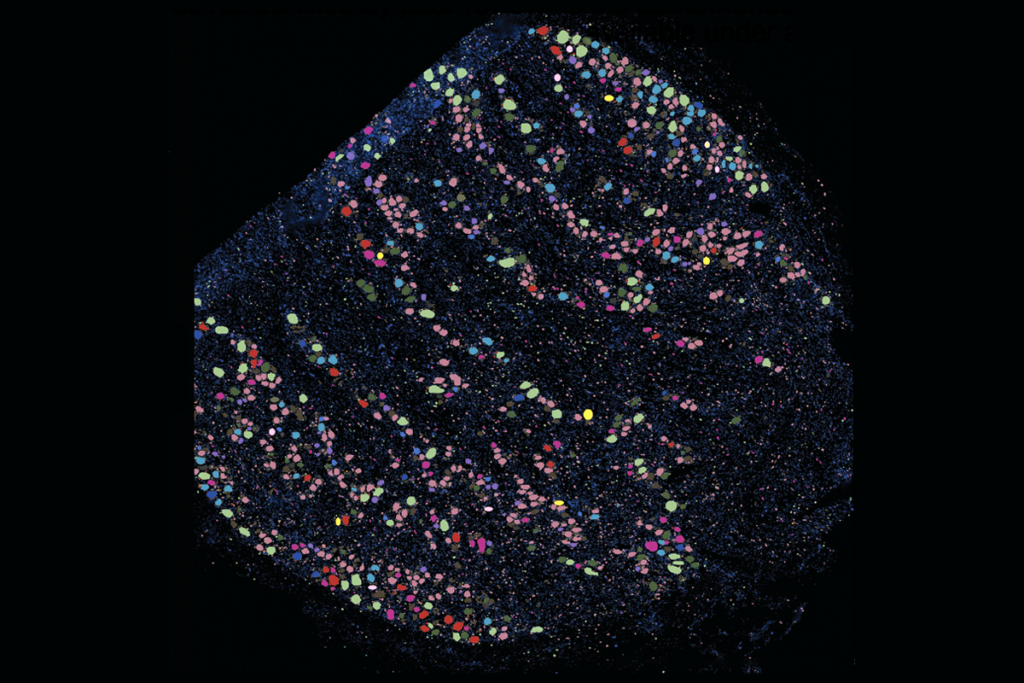Partnerships with people on the spectrum yield rich research insights
A growing number of researchers work with people on the spectrum when designing their studies — sometimes with help from programs intended to boost such partnerships.

Editor’s Note
There are different views on whether ‘people with autism’ or ‘autistic people’ is the better way to refer to individuals on the spectrum. Some of the people quoted in this article prefer to say ‘autistic,’ but Spectrum’s style is to refer to ‘people with autism.’
It wasn’t until Anna Remington had nearly finished collecting data that she uncovered the flaw in her study.
A couple of years ago, Remington, then a lecturer at University College London, was investigating how people determine whether someone is trustworthy. She and her colleagues showed participants with the condition a series of images of unfamiliar faces, along with some hypothetical information about each person. They then asked the participants, “Would you approach this person — either in a social or financial context?”
Overwhelmingly, the participants with autism said “no,” even in response to characters who had been described as trustworthy. Eventually, one of them pulled her aside to explain: He wasn’t interested in “approaching” anyone.
“All of the questions we’d been asking were totally the wrong questions,” Remington says. “We thought they were really clear, but actually they were asking a completely different thing.”
Based on that experience, Remington now creates her study questions with input from people on the spectrum. Her colleagues, some of whom are on the spectrum, have also developed a set of tips for other researchers who would like to involve people with autism in their work.
Like Remington, a growing number of researchers work with people on the spectrum when designing their studies — sometimes with help from programs intended to boost such partnerships. In some cases, people with autism lead the research.
These collaborations remove a virtual wall that once separated study participants from scientists. Taking down that wall may make autism research more accurate — and more relevant to the people who are meant to benefit from it.
“All of the measures and the tools we build are based on a certain set of norms and expectations,” says Sue Fletcher-Watson, senior lecturer of clinical brain sciences at the University of Edinburgh in Scotland. “I think it’s just good science to identify those assumptions and test them, and that’s something that you can do with input from the [autism] community that you can’t really do on your own.”
Casual conversations:
Partnerships between autism researchers and people on the spectrum can take a variety of forms. Fletcher-Watson, for example, has an ‘autistic mentor’ named Kabie Brook. Fletcher-Watson became acquainted with Brook on Twitter, when the latter responded to a tweet in which she had used the phrase ‘autism parent.’ Fletcher-Watson says Brook objected to the phrase because it suggests that people are parenting autism, rather than parenting individuals.
Fletcher-Watson had used the shorthand to meet the 140-character limit Twitter had at the time. But Brook’s comments made her realize, she says, “For autistic people, that kind of logic just doesn’t cut the mustard.”
Brook agreed to become Fletcher-Watson’s mentor 18 months ago. Now the two talk every three months so Brook can offer feedback on upcoming grants, presentations, papers or class lectures. Fletcher-Watson says these conversations improve the precision and accuracy of her work.
Some researchers consider it their duty to consult people with autism. Laurent Mottron says he tries to include people on the spectrum in every step of his research, from concept to data analysis. “We don’t have a choice,” says Mottron, professor of psychiatry at the University of Montreal. “For scientific and ethical reasons, it would be dishonest not to do it.”
Partnering with people on the spectrum can suggest new avenues of research, says William Mandy, senior lecturer in clinical psychology at University College London. Mandy says some of his ideas emerge from informal conversations at scientific conferences or on social media, where he sometimes solicits input from the community.
Mandy and his colleagues have found that about one in four women with the eating disorder anorexia also have autism1. His conversations with people on the spectrum suggest that their anorexia arises for a different reason than it does in typical people: Instead of having a negative body image, people with autism may be driven by obsessive behaviors. For example, they may need to exercise a certain amount or consume a particular number of calories.
This insight inspired Mandy to apply for a grant to study this idea, which he received in July.
Visual scale:
For Christina Nicolaidis, collaborating with people on the spectrum helped to refine a research questionnaire. Nicolaidis, who co-directs a partnership program called the Academic Autism Spectrum Partnership in Research and Education, says adults with autism urged her to study barriers to using healthcare. So she showed them the surveys researchers use to gauge people’s experiences with healthcare.
These surveys provide a choice of responses such as ‘always,’ ‘most of the time,’ ‘sometimes,’ ‘rarely’ or ‘never’ for particular situations. But feedback from the community revealed that some people wanted more precise options, such as percentages. Others, including some with intellectual disability, needed simpler choices.
The team, including some of the people with autism she consulted, then devised a visual rating scale consisting of cylinders filled to different levels. “I wouldn’t have known the response items were the problem, or have been able to come up with solutions that ultimately help make it easier for them to participate and that are more accurate,” Nicolaidis says.
Since then, her team has also developed strategies for improving access to healthcare for individuals on the spectrum, such as a list of accommodations doctors and clinics can consider. She is also editor-in-chief of a new journal, Autism in Adulthood, which is set to publish its first issue in May and includes adults with autism as editorial board members, authors and peer-reviewers.
Starter pack:
Help is available for researchers who want to partner with people on the spectrum but don’t know where to start.
Nicolaidis and her colleagues, for instance, provide one-on-one consultations by request.
The Centre for Research in Autism and Education in London, which Remington directs, has created a ‘Starter Pack’ that contains tips and guidelines for researchers who want to involve members of the autism community. Some of her colleagues are also working with researchers to learn more about potential barriers to these collaborations, and plan to host a training event at Kings College London in February.
For those interested in more intensive partnerships, a new program offers grants to people with autism who want to lead their own research in the lab of an autism researcher. The program, sponsored by the London-based charity Autistica, is set to begin in January.
In this program, interested researchers register with Autistica. And people on the spectrum who have an idea for a project submit a preliminary application that outlines the idea and names the researcher they’d like to work with. The charity then pairs up the parties, who together apply for a research grant. James Cusack, director of science for Autistica, says the charity will initially award four grants of 12,500 pounds each to people with autism.
The program gets people on the spectrum involved at the start of the process, which may spur innovation. “It’s important to get some new researchers and some fairly alternative research ideas,” Cusack says.
Secret ingredients:
These types of partnerships can be challenging to maintain, but they’re usually worth the effort, says Mottron, who has collaborated with Michelle Dawson, a woman on the spectrum, for 15 years.
Mottron regularly asks Dawson to review drafts of papers before he submits them for publication. He says Dawson can be a harsh critic, but she often spots logical errors that he and his colleagues have overlooked. “It probably increases a lot the quality of our papers,” Mottron says.
He says one secret to any successful partnership is establishing mutual respect. “An autistic person has bad life experiences, from school, from personal relationships, family and so on,” he says. “For them to accept [to] work with somebody else, you need to be exceptionally attentive, honest and serious.”
He and Dawson have had disputes over the years, he says, but they both know that neither of them would do anything to damage the reputation of the other. In short, Mottron has earned her trust.
Remington and her colleagues also emphasize the importance of mutual trust in making the partnerships work. After publishing the results of their most recent project in June, team members shared their experiences and insights in a blog post.
“The future of autism research hangs on the involvement of autistic researchers,” Remington says. “There’s no other way of making sure we are investigating the right things, making the right discoveries, even interpreting the results in the right way.”
References:
- Westwood H. et al. Psychiatry Res. 258, 531-537 (2017) PubMed
Recommended reading

New organoid atlas unveils four neurodevelopmental signatures

Glutamate receptors, mRNA transcripts and SYNGAP1; and more
Explore more from The Transmitter

‘Unprecedented’ dorsal root ganglion atlas captures 22 types of human sensory neurons

Not playing around: Why neuroscience needs toy models

